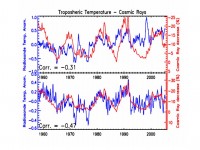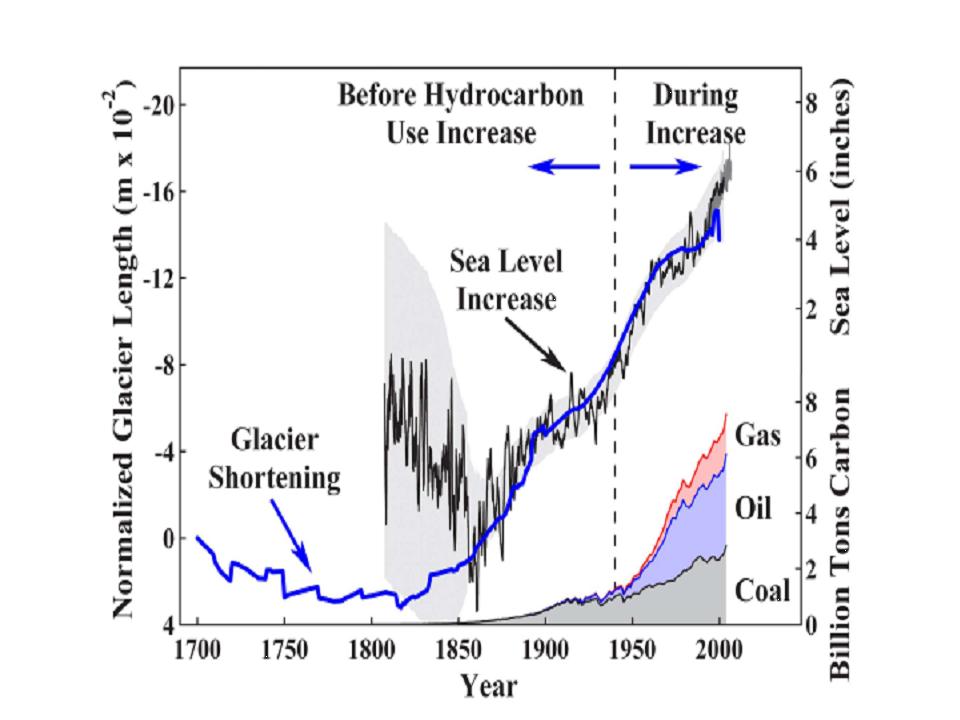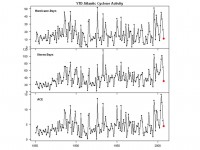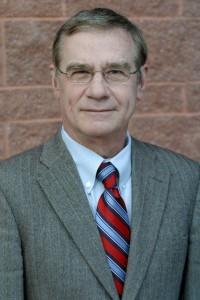By John McLean
In February 2007 the IPCC Fourth Assessment Report (4AR) claimed that there was a 90% to 95% probability that man-made emissions of carbon dioxide were having a significant influence on climate. This claim was widely accepted by the public and many governments made both political and financial commitments on the basis of its statements.
But did anybody actually read the report in detail and check the evidence on which the claim was made? At the time this would have been extremely difficult because the Summary for Policy Makers was released well in advance of the detailed document on which it was based, but prudence would have dictated waiting for that evidence before accepting that pivotal claim.
When the Working Group I report was finally released in May 2007 anyone who reviewed the principal finding, that mankind was responsible for the increase in temperature, should have been appalled by the absence of concrete evidence. The so-called evidence is a nothing more than pastiche of dubious assertions and false assumptions, and if these are the best arguments that the IPCC could advance then its future should be reconsidered.
Given the doubts over the quality of the temperature record I am not sure that the IPCC has even proven any recent increase in temperatures let alone produced any credible evidence that humans are having a substantial impact on temperature. Read more here.
By H. Svensmark and E. Friis-Christensen
The new study from the Danish National Space Center was conducted by Physicist Henrik Svensmark and Eigil Friis-Christensen. Svensmark previously published his finding on the influence that cosmic rays have on cloud production in the Proceedings of the Royal Society Journal in late 2006 and he has a new 2007 book entitled “The Chilling Stars: A New Theory of Climate Change.” This new study was released within the past week or so and it is a rebuttal to a July 2007 media hyped UK study alleging there has not been a solar-climate link in the past 20 years.

The solar cycle and the negative correlation of global mean tropospheric temperatures with galactic cosmic rays are apparent in this ESA-ISAC analysis. The upper panel shows observations of temperatures (blue) and cosmic rays (red). The lower panel shows the match achieved by removing El Nino, the North Atlantic Oscillation, volcanic aerosols, and also a linear trend (0.14 § 0.4 K/Decade).

By Dr. Tim Ball in the Canada Free Press
The world is cooling. Global temperatures have declined since 1998 and a growing number of climate experts expect this trend to continue until at least 2030. This, happening while carbon dioxide (CO2) emissions continue to rise, is in complete contradiction to the theory of human-induced (anthropogenic) global warming (AGW). The CBC and other die-hard AGW proponents respond by publicizing selected glacial melts and the impact of dramatic but improbable sea level rises, the only warming issues that seem to grab public attention.
Canadian politicians simply follow along, parroting scientifically unjustified AGW rhetoric while lamenting that “climate change is real!” They either don’t know, or hope the public don’t know, that climate changes all the time no matter what we do.
For most of the world’s plants and animals, humanity included, cooling is a far greater threat than warming. This is especially true for Canada where energy usage, and consequently pollution levels, will rise as temperatures drop. More importantly, if we prepare for warming and it cools, Canada’s food supply is seriously at risk since we are already at the northern limit to agriculture. Even a small amount of cooling would necessitate increased genetic engineering of crops and animals to sustain ourselves and further cooling still would end much of today’s farming in Canada.
Yet, if we prepare for cooling and it warms, we simply adopt farming practices used to the south of us. It is the case in most parts of the world that adaptation to warming is far easier than adapting to cooling. Canada’s situation is just that much worse due to our latitude.

“Climate change campaigners are frightened that, if the lid is lifted off the Pandora’s Box of modern day climate science, the vast uncertainties and contradictions in the field will become apparent and public support for multi-billion dollar climate change schemes will quickly die.”
By Robinson, Robinson and Soon
There are no experimental data to support the hypothesis that increases in human hydrocarbon use or in at mospheric carbon dioxide and other greenhouse gases are causing or can be expected to cause unfavorable changes in global temperatures, weather, or landscape. There is no reason to limit human production of CO2, CH4, and other minor greenhouse gases as has been proposed. We also need not worry about environmental ca lamities even if the current nat ural warming trend continues. The Earth has been much warmer during the past 3,000 years without catastrophic effects. Warmer weather extends growing seasons and generally improves the habitability of colder regions.
As coal, oil, and natural gas are used to feed and lift from poverty vast numbers of people across the globe, more CO2 will be released into the atmosphere. This will help to maintain and improve the health, longevity, prosperity, and productivity of all people. The United States and other countries need to produce more energy, not less. The most practical, economical, and environmentally sound methods available are hydrocarbon and nuclear technologies. Human use of coal, oil, and natural gas has not harmfully warmed the Earth, and the extrapolation of current trends shows that it will not do so in the foreseeable future. The CO2 produced does, however, accelerate the growth rates of plants and also permits plants to grow in drier regions. Animal life, which depends upon plants, also flourishes, and the diversity of plant and animal life is increased.
Human activities are producing part of the rise in CO2 in the atmosphere. Mankind is moving the carbon in coal, oil, and natural gas from be low ground to the atmosphere, where it is available for conversion into living things. We are living in an increasingly lush environment of plants and animals as a result of this CO2 increase. Our children will therefore enjoy an Earth with far more plant and animal life than that with which we now are blessed.
Read this paper here.

Glacier shortening and sea level rise. Gray area designates estimated range of error in the sea level record. These measurements lag air temperature increases by about 20 years. So, the trends began more than a century before increases in hydrocarbon use.

By Steve McIntyre, Climate Audit
Some of you have been noticing a tendency for almost any gust of wind in the Atlantic to now become a named storm. Given this tendency, more relevant metrics are obviously the number of hurricane-days (and the closely related ACE index) and the number of storm-days.
I’ve scraped the data and done the YTD calculations, comparing these to the corresponding values to the end of September in previous years (I’ll replace this graphic in a few days when Sept 2007 is completed, but I don’t expect much change.) At this point, despite a couple of intense hurricanes, 2007 is even quieter thus far than 2006.

Note that Steve finds similar trends in the eastern and western Pacific and southern hemisphere. Only the North Indian Ocean has had an unusually active season thus far. Of course the season is not over although the peak has past. See full data plots here.
By the Institute of Physics, September 2007
A key element in assessing climate change is the powerful computer simulations used to demonstrate how complex, interacting forcing agents influence the evolution of the climate system. Although the models are built around a long-accumulated understanding of the underlying physical processes and dynamics - and are compared with historical and contemporary observations - there are still many aspects that are less well understood. There is, therefore, a range of views about the reliability of using these models to make credible projections of our future climate.
At the seminar, two leading climate physicists, Prof. Richard S Lindzen, Alfred P Sloan Professor of Meteorology at the Massachusetts Institute of Technology (MIT), and Prof. Alan J Thorpe, chief executive of the Natural Environment Research Council (NERC), described the current status of climate-model prediction from rather different viewpoints. Prof. Lindzen explained the limitations of climate models and outlined why attempts to attribute global temperature rise to an increase in carbon dioxide (CO2) emissions were flawed. He maintained that there was no sound evidence that temperatures would rise substantially in the future. Prof. Thorpe based his presentation on the huge weight of evidence in the scientific literature, showing that current and future warming of the climate is caused by the human input of greenhouse gases. He presented a variety of evidence supporting the validity of current global models on which current concerns about global warming are based. He also stressed that more research was being done and needed to refine the details further. Read more here.
By the Associated Press in the Daily Press
CHARLOTTESVILLE, Va. - Virginia’s state climatologist, whose doubts about global warming and utility-industry funding made him a lightning rod on climate change issues, quietly left his position over the summer.
Patrick J. Michaels, who had held the position since 1980, will remain as a part-time research professor on leave at the University of Virginia, Joseph C. Zieman, chairman of the school’s Department of Environmental Sciences, told The Daily Progress of Charlottesville. Michaels has been a leading skeptic of global-warming theories. While he believes global warming is real and influenced by humans, he contends it primarily is caused by natural forces. That view caused Gov. Timothy M. Kaine’s office to ask Michaels last year to refrain from using his title when conducting non-state business because of fears his views would be perceived as an official state position.
Michaels said he will continue to work at the libertarian-conservative Cato Institute in Washington, where he works while on leave from U.Va. “I feel I can speak more freely,” he said. Read full story here.

Icecap note: Icecap looks forward to Pat being free to express his opinion more openly. He has been an excellent spokesman for a more balanced view of climate change which has made him a target of those wishing to silence all opposing views.
By Marc Marano, EPW Blog
Nearly two dozen prominent scientists from around the world have denounced a recent Associated Press article promoting sea level fears in the year 2100 and beyond based on unproven computer models predictions. The AP article also has been accused of mischaracterizing the views of a leading skeptic of man-made global warming fears. The scientists are dismissing the AP article, entitled “Rising Seas Likely to Flood U.S. History” as a “scare tactic,” “sheer speculation,” and “hype of the worst order.”
Prominent scientist Professor Nils-Axel Morner, declared “the rapid rise in sea levels predicted by computer models simply cannot happen.” Morner, a leading world authority on sea levels and coastal erosion who headed the Department of Paleogeophysics & Geodynamics at Stockholm University, noted on August 6, 2007: “When we were coming out of the last ice age, huge ice sheets were melting rapidly and the sea level rose at an average of one meter per century. If the Greenland ice sheet stated to melt at the same rate - which is unlikely - sea level would rise by less than 100 mm - 4 inches per century.” Morner, who was president of the INQUA Commission on Sea Level Changes and Coastal Evolution from 1999 to 2003, has published a new booklet entitled ”The Greatest Lie Ever Told,” to refute claims of catastrophic sea level rise.
Emmy Nominated Meteorologist Art Horn says AP loves ‘a scary story’ .“Fearless forecasts from people who likely have never made real time, real world predictions. We who have worked in the real world of everyday weather forecasting for decades understand what it’s like to be burned, even when you felt the forecast was a lock. I’m of the belief that most if not all of these predictions come from people who don’t know much about the nature of prediction,” Horn wrote to Inhofe EPW Press Blog the day after the AP article was published. “Working with computer models that don’t even start with a climate remotely similar to the real world can’t give you results that are in any way close to useful. But the AP and all news organizations love a scary story. I know, I worked as a TV meteorologist for 25 years. If it will generate a buzz they will run with it,” Horn explained. “Making predictions about how much sea level will rise helps to insure the money train will continue. There will be people in seats of power that will continue to feed money to universities, research facilities and people like [NASA’s] James Hansen.
Former Harvard physicist Dr. Lubos Motl writes: “There’s no good reason to expect more than 3 millimeters per year in average. It’s been really 1.5 mm in the last 50 years, and 2 mm per year in 1900-1950. The rate has actually slowed down according to some papers.” “Any model that predicts significant acceleration [of sea level] with growing CO2 is falsified or nearly falsified by the observed data. It’s crazy to think that this slow gradual rise is anything that would justify any actions besides the houses that have to be either moved or protected on the centennial scale,” he added. “Any calculation that wants to indicate that the effects of sea level rise are a significant portion of the life or the economy is simply a miscalculation,” he concluded. Read what the other scientists have to say here.




